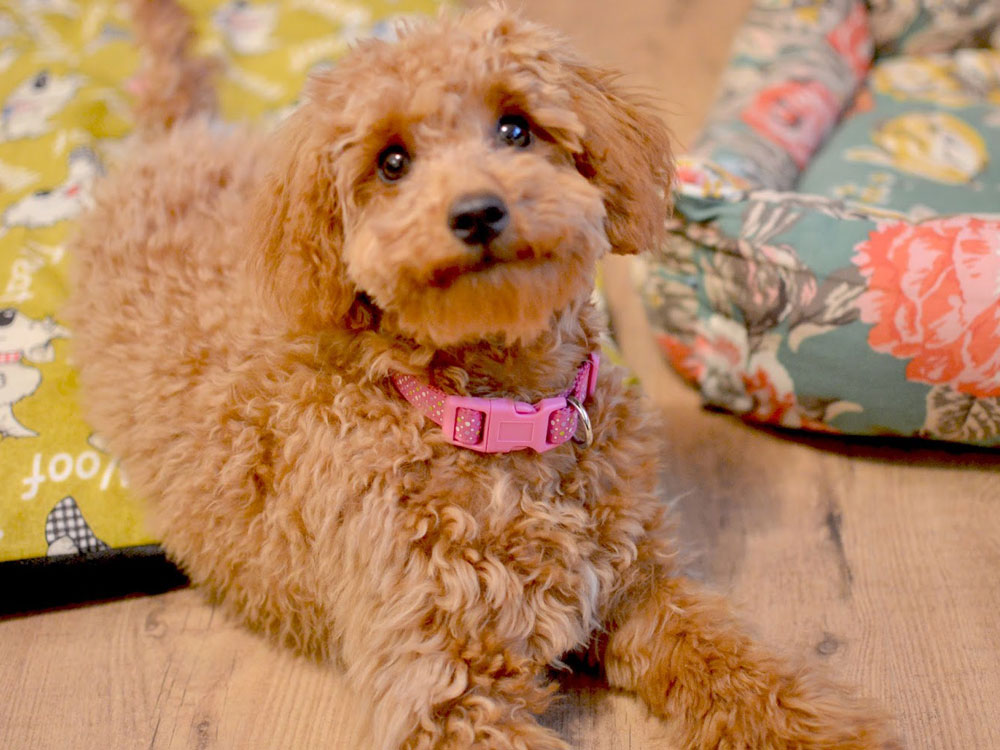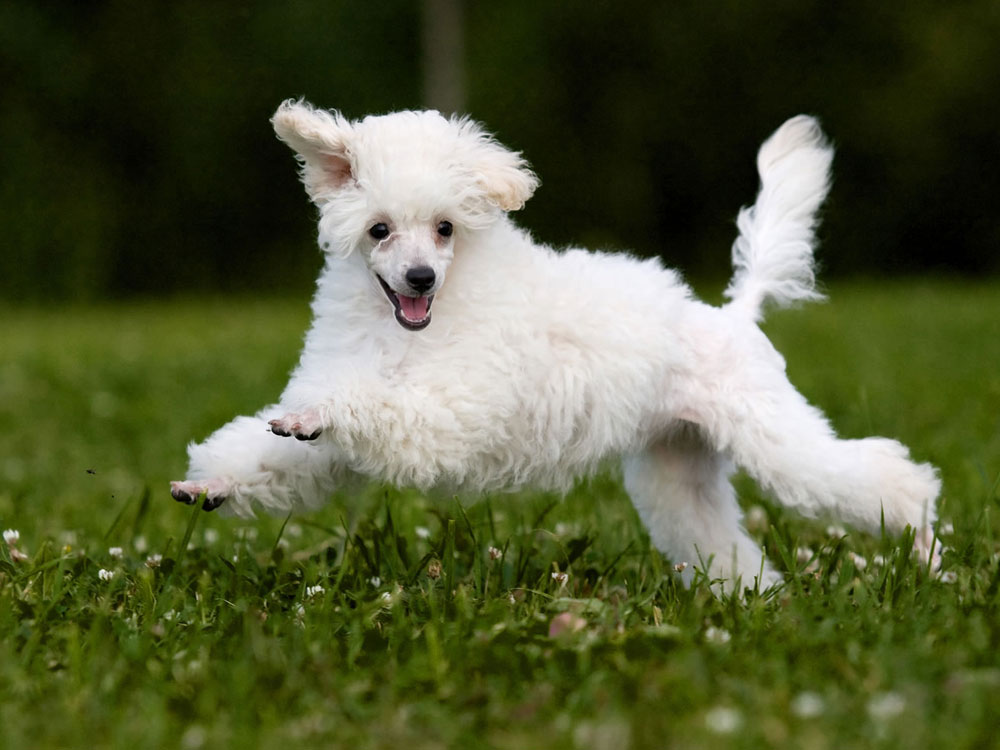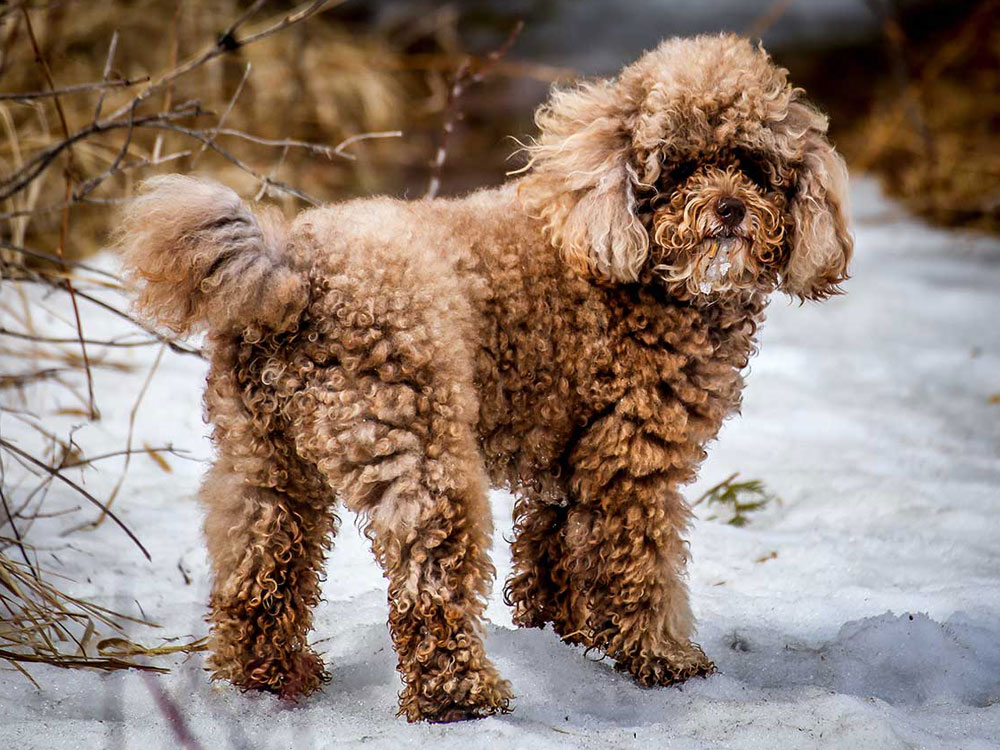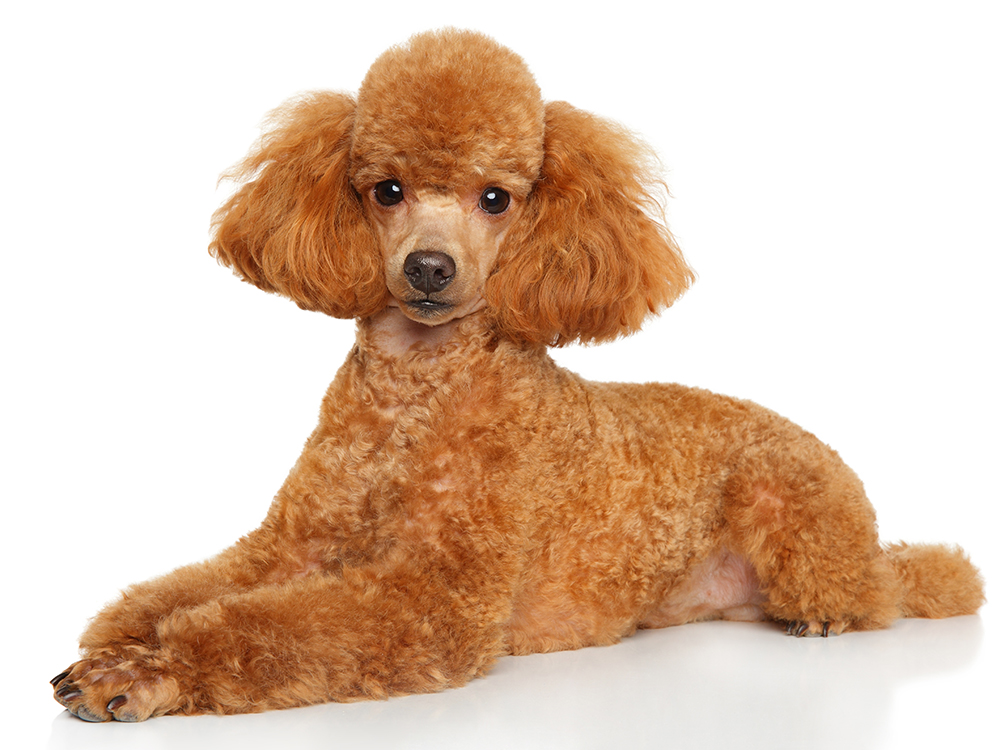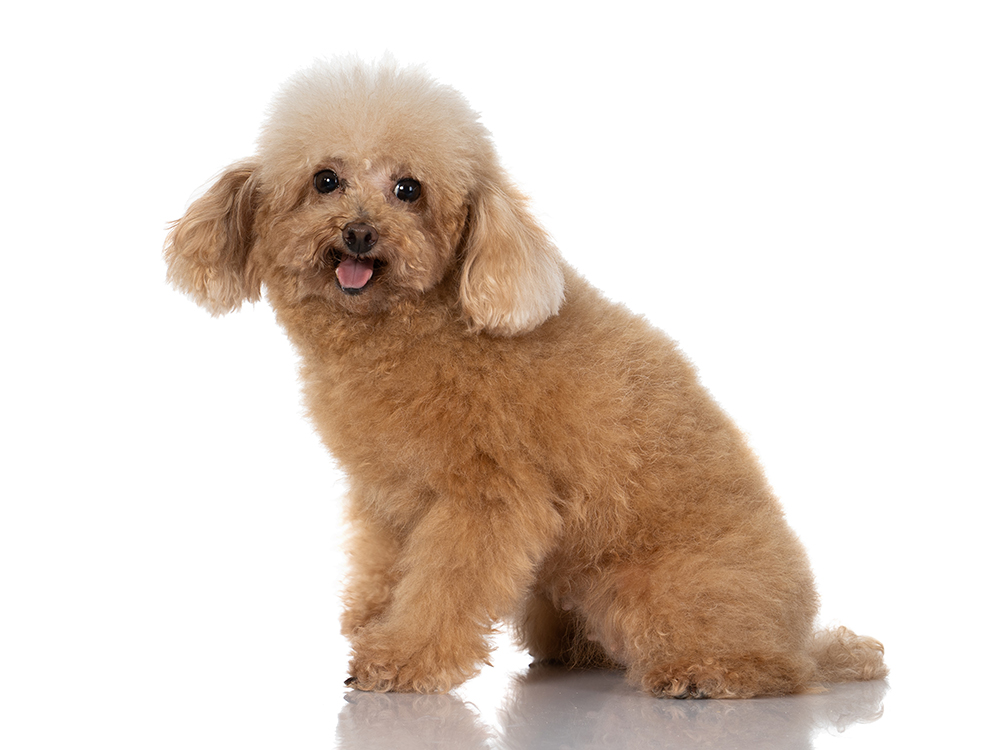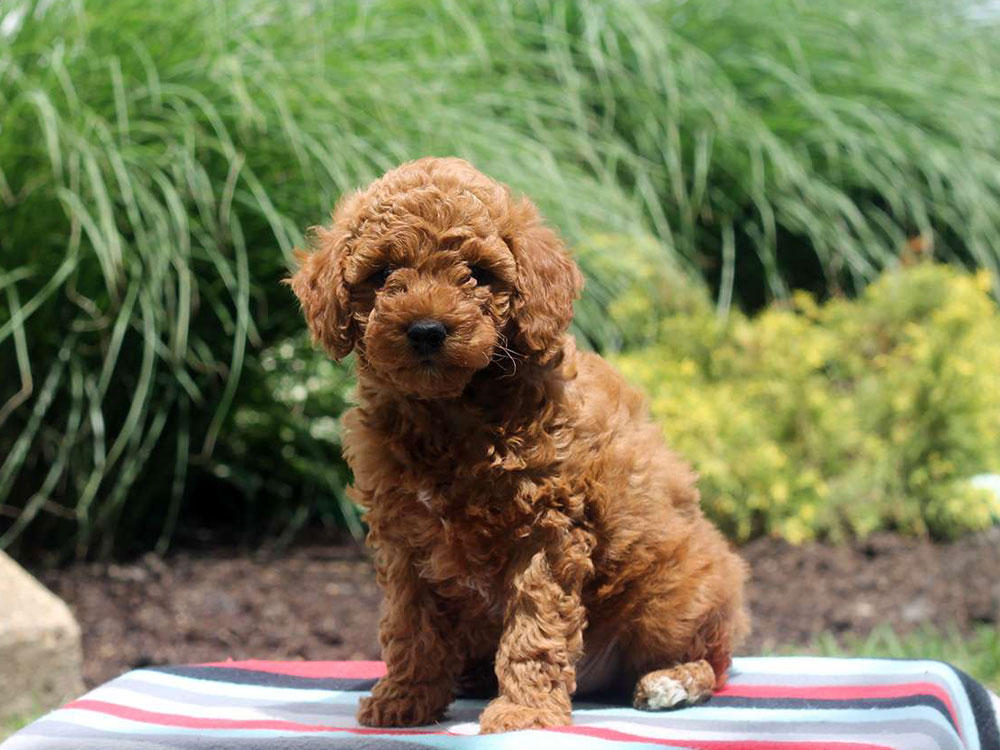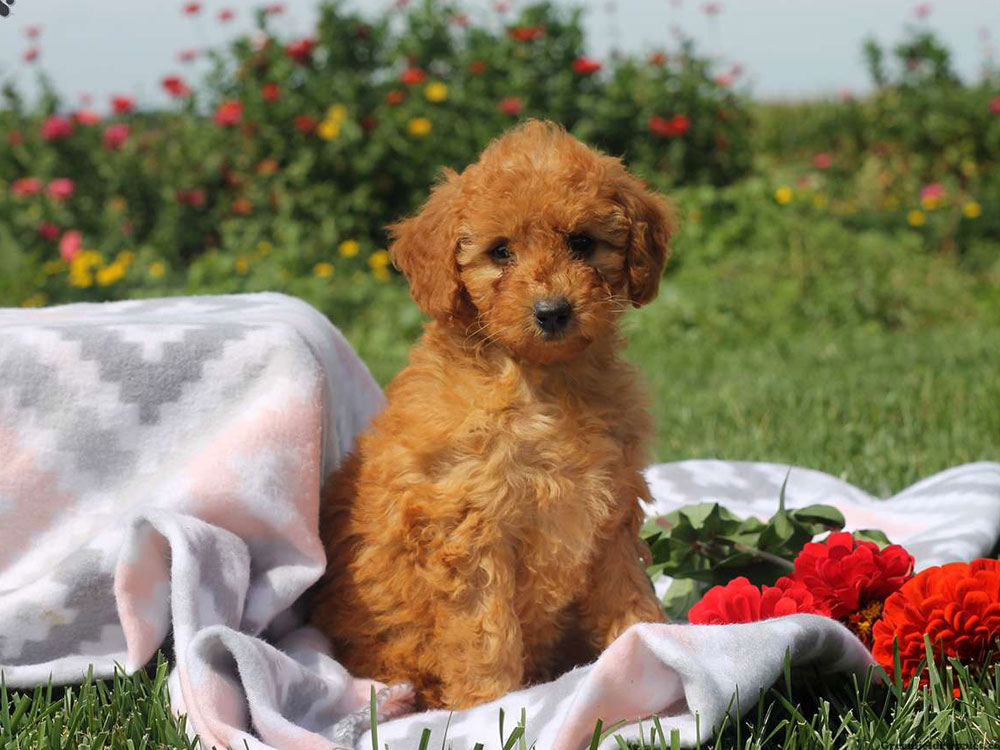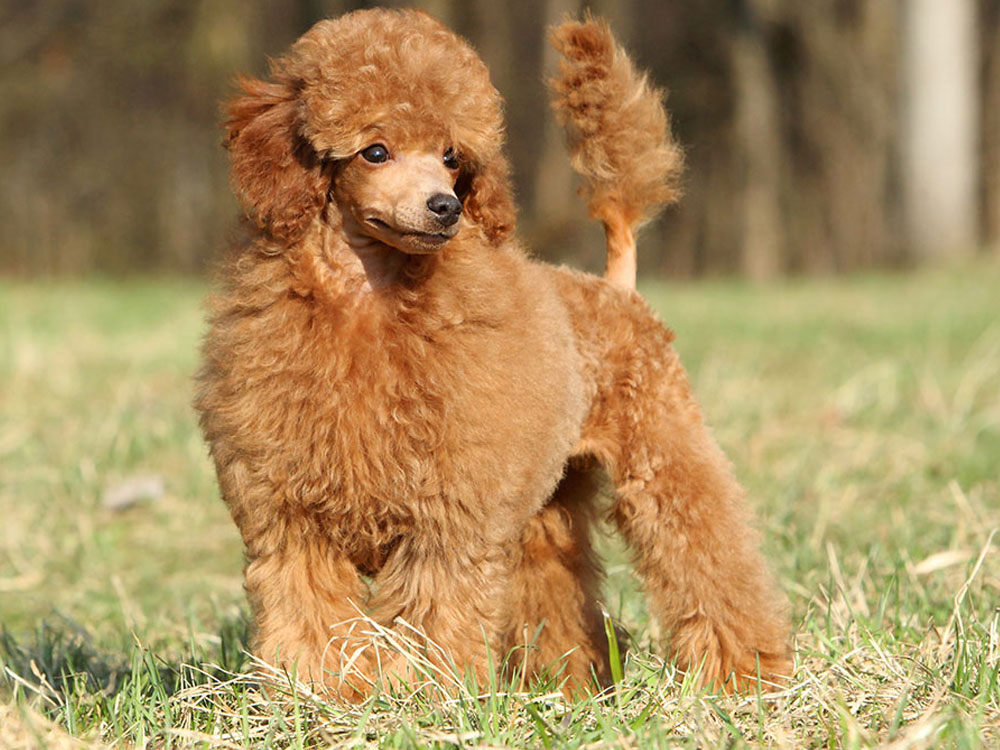
Miniature Poodle Breed Pictures
Vital Breed Stats
| Height: | 30 - 38 cm M | 30 - 38 cm F |
| Weight: | 6 - 8 kg M | 6 - 8 kg F |
| Breed Group: | Terrier Dog Group |
| Life Expectancy: | 15 - 18 years |
| KC Registered: | No |
Breed Characteristics
| Size: |  |
| Grooming: |  |
| Exercise Level: |  |
| Barking Level: |  |
| Good with Children: |  |
| Good with other pets: |  |
| Affectionate: |  |
| Protective: |  |
| Cost to Keep: |  |
Give a thumbs up if you love the Miniature Poodle

0
More About the Breed
History
The poodle, considered as one of the oldest breeds created as a waterfowl hunter, originated in Germany but flourished as a breed in France. It is believed to have descended from various European water dogs, whilst others claim it came from Asian herding dogs that eventually reached Germany through the Germanic Goth and Ostrogoth tribes.
The miniature and toy poodles are said to have been developed soon after the standard. However, some argue that it was only during the fifteenth century that breeders started making smaller versions. It is worth noting that the smaller varieties were created by selectively breeding poodles that were small in size and not by crossing them with different smaller breeds.
The miniature poodle rose to popularity as a companion pet and a cute entertainer in the circus. Because of its versatility, it became desirable to the nobles and royalty. It became one of the most sought-after breeds in the world, including the UK during the '50s and '60s. Because of this, the quality of the mini poodle deteriorated, leading to genetic health issues. However, breed enthusiasts were able to revive the breed through selective breeding, eradicating most of the health problems. It remains to be a popular dog breed up until today because of its endearing appearance and gentle nature. It is registered with the Kennel Club under the Utility Group.
Appearance
Grooming
Miniature poodles have dense, harsh, and profuse coats with extremely curly hair that lie close to the body. They can come in any solid colour such as black, white, apricot, blue, brown, cream, red, and silver. Like its standard and toy counterparts, the miniature poodle is high-maintenance in the grooming front. Aside from daily brushing to avoid tangles and matts, it needs professional grooming and clipping every six to eight weeks.
Other important grooming requirements are regular nail trimming, tooth brushing twice weekly, and ear cleaning when there is too much wax build-up. Owners also need to check its skin for sores and ticks.
Temperament
The miniature poodle is an affable, lively, and fun-loving dog that enjoys the presence of its family. Since it craves human contact, it always wants to be a part of household activities. It enjoys entertaining its owners with its comical antics. On the other hand, it is usually aloof toward people it does not know, but would warm up after some time. The mini poodle is a good watchdog as it is quick to alert when it senses a presence.
The mini poodle is patient and gentle toward children, but adult supervision is always important just to be safe in case playtime becomes too rowdy. It also gets on well with pets it grows up with, including cats. However, the neighbour’s small pets are a different story.
Intelligence
Nutrition
- Senior and less active: up to 520 calories daily
- Typical adults: up to 590 calories daily
- Physically active/working dogs: up to 650 calories daily
Feeding
Health
Exercise
Cost of Ownership
Before taking the leap to take home a miniature poodle, you need to ask yourself if you can financially afford to raise one throughout its lifetime. First off, the price to buy a well-bred puppy ranges from £700 to more than £900.
Aside from paying for the puppy itself, make sure you have enough money to pay for other expenses such as food and treats (£30 a month), basic equipment like bed, crate, grooming equipment, lead, collar, toys (initial cost of £200), professional grooming (starts at about £30 per session), veterinary costs (up to £800 in a year), and pet insurance (starts at £20 for basic coverage).
Is a Miniature Poodle Right for You?
- The miniature poodle is a medium breed, bigger than the toy poodle and smaller than the standard poodle.
- It is intelligent, active, and fun-loving to its family, but reserved toward strangers.
- The breed loves children and is suitable for first-time owners.
- It easily learns new things, including undesirable behaviour.
- To maintain its lovely curly coat, it needs to be taken to the groomers every six weeks or so.






